Practical Approaches to Research in Fragile Environments: A Research Visit to Mumbai
We have three blogs which have been published by various third year undergraduate students on the research field trip in Mumbai at the beginning of January.
The first blog was published by Olivia Harper:
The research visit to Mumbai, in collaboration with Tata Institute of Social Sciences (TISS) allowed HCRI students to gain first-hand experience as researchers. My group’s research focus was on the memorialisation of the 2008 terror attacks in Mumbai. Originally, our intention was to compare how the local population has memorialised the events compared to the government. However, as our research visit progressed so did our research focus. Our final research question became: how do different methods of memorialisation aid individuals’ recovery after the 2008 terror attacks in Mumbai?
Our research question changed talking to scholars, locals, tourists and staff working at the sites of the attacks. We found that there are varying agendas behind the types of memorials present in Mumbai and divergent perceptions of these memorials. There is a divide between the memorialisation of formal actors, such as police officers, compared to civilian victims. In talking to a mental health professional highlighted the detrimental mental health effects among families of civilian victims as a result of a lack of recognition in the acts of memorialisation.
The module’s final assessment was to give a ‘walking tour’ that integrated our academic learning with the field visit. In order to compare the different forms of memorials, we chose to include on our tour three of the targeted locations in the terror attacks. Our first site, the Nariman House, a Jewish centre, hosts the only memorial that encompasses all victims of the attacks with no differentiation or hierarchical structure between individuals.
The Leopold Café, a popular tourist spot, has preserved bullet holes in its walls and shutters, as well as, a hole in the floor from a grenade. Those we spoke with held the view that the decision to preserve the bullet holes acts less as a memorial but is more for the café’s financial benefit. The owner, however, argued that preserving the bullet holes and re-opening the café the day after the attacks occurred represented a stand against the perpetrators of the attacks.
The Taj Mahal Palace Hotel, owned by Tata, commemorates the staff and guests killed at the location in the form of a memorial made up of their names listed on a wall and the ‘Tree of Life’ planted in their honour. While the act of memorialisation has been prioritised here, we also discovered that Tata contributed to the recovery process of affected individuals, including survivors and families of victims, by creating a rehab, aftercare program. Both this and the Leopold Café sites are privately owned, which highlights that ownership can dictate the methods of memorialisation that are chosen as well as the way in which victims are aided in their recovery process. While Leopold’s response was arguably a business strategy, Tata’s response at the hotel was for the benefit of the victims.
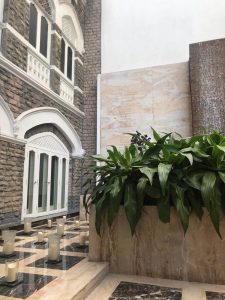
Figure 3: The memorial at the Taj Mahal Palace Hotel, commemorating all staff and guests who were victims of the attacks
Our findings highlighted the Mumbai government’s failure to memorialise all victims of the 2008 terror attacks, as the government chose to commemorate only police officials. The memorials featured here are privately owned, highlighting the efforts made by Mumbaikars to fill the void in the government’s failure to commemorate all victims. Overall, the research visit was extremely rewarding and enabled us to gain first-hand experience as researchers by collecting primary data.
The second blog was published by Isabelle Kidder and Heidi Parkes-Smith:
The blog is about about the research visit to India that is part of the 3rd year undergraduate module on conducting research in fragile environments led by Dr Birte Vogel and Dr Larissa Fast in cooperation with TISS in Mumbai.
Our research trip to India allowed us to gain research experience and to apply what we have already learnt about disaster management and its theories to the context of Mumbai. Our group’s research focused on how plastic waste, infrastructural development and the destruction of mangrove ecosystems contribute to flood risk in Mumbai.
First impressions: India is hot, hectic and full of monkeys. We love it already.
Our first few days at TISS were mostly spent in really interesting lectures delivered by a variety of actors involved in disaster management in Mumbai, including academics and government officials.
We went on quite a few visits to different places in Mumbai such as the UNICEF country office, the disaster management control centre and a slum, which gave us an idea of the complexity of the problems associated with creating a disaster management plan that was suited for everyone.
Research Experience:
Outside of lectures, we set about organising interviews with NGOs and attempted to plan whereabouts our assessed tour would take place. If anyone has ever visited Mumbai or any other big city in India, then you’ll know that this was no easy task. After bundling into our 3rd rickshaw, we decided we had to rethink our tour a few times due to the logistical issues of getting around such a city that was so hectic and full of life.
We managed to undertake some really interesting and useful interviews with a variety of people such as ragpickers (people who make money from recycling products from dumping grounds) and NGO workers from RUR Greenlife.
Research Findings:
Through our observations and interviews we found that plastic and construction waste often ends up in waterways, which prevents them from flowing naturally into the sea. We spoke to community members who stated that everyone was used to the flooding, a risk perception we were not expecting. A bigger concern for those living in the slums was the threat of bulldozers, as the government often deconstructs communities labelled as ‘illegal settlements’. Mumbai introduced a plastic ban in 2018, however plastic is an important part of the livelihoods of Mumbaikers, and there is a lack of available and affordable alternatives. Community beach clean-ups and discussions with students and NGOs proved Mumbaikers are committed to reducing plastic waste, and regard it as a collective responsibility. Inciting cultural change is crucial, and is slowly happening.
In addition to plastic waste, infrastructural development plans increase flood risk. Concreting the nullah’s and greenspaces such as mangroves prevents water from soaking naturally into the soil, increasing water flow into low lying areas. There are many individuals and NGOs advocating for change in Mumbai, such as the Conservation Action Trust. They gave us an impressive boat ride tour of the mangroves, and it was a relief to escape from the hustle and bustle of the city for an hour or two! Our interactive tour of Mumbai pulled all of these factors together, and included a visit to Deonar dumping ground and a nature reserve of mangroves and salt marshes.
Overall, our trip to Mumbai was incredible, challenging and eye-opening. We were lucky to be welcomed by the fantastic members of TISS, who went above and beyond to accommodate us (and our sensitivity to spice!). We learnt a lot more than expected about not only our topic of the factors of flood risk and the opinions of local people (which in itself was fascinating) but also in terms of India’s history, culture, and how the reality of research was often quite different to our expectations. Overall, the trip was one of the best modules we have ever taken, and we gained so much from it, and we are very grateful to both HCRI and TISS for the opportunity.
The third blog was published by Lucy Cook:
Only 4 days into the New Year and we found ourselves in the chaotic, vibrant, pressure-cooker of a city that is Mumbai. There wasn’t much time to wallow in our new surroundings; we had to attend a welcome meeting with the chancellor of our host University, TISS to attend, lectures about TISS’s approach to disaster management to get to, and our first authentic Maharashtrian cuisine to taste.
The 10 days spent there were packed with lectures from professors and government officials, covering the history of Maharashtra (the state Mumbai situates), disasters and development and India’s approach to disaster risk reduction. We were always kept well refreshed with intervals of chai (very sweet tea) and samosas.
One thing that surfaced after the lecturers was that learning focused quite heavily on the geographical factors of disasters, not just anthropogenic aspects. This was an interesting new perspective for me, and once we went on a few field visits around the city it became obvious why. Mumbai’s precarious positioning as an island off the Arabian coast makes it vulnerable to disasters, particularly flooding. On boat ride after a visit to a newly created nature reserve we learnt how sacred the mangroves are as natural defence barriers against flooding. However, large-scale construction to make way for the city’s burgeoning population was swallowing up pockets of mangroves, stripping away any naturally-engineered protection.
We also visited M-ward, a local slum where TISS had carried out disaster reduction research and created an education centre for children to learn outside of their homes. A poignant memory sticks out from our visit here, the children’s perception of flooding differed hugely from ours; even when rain water is above knee height in their homes they still don’t consider it a flood, despite this happening 2-3 times a day during rainy season. We also met with the United Nations about UNICEF’s work with partner groups to foil attempted terrorist initiatives.
Amongst the activities, we carried out primary research and scouted locations for our 2 hour guided walking tours taking place on the final day. This was quite a big test for all of us as we didn’t get much free time to prepare and had also underestimated just how much data we would collect through accidental ethnographic methods. We ended the trip with a meal with our hosts, who had gone above and beyond to welcome us, and a couple of beer towers to ease the flight home.

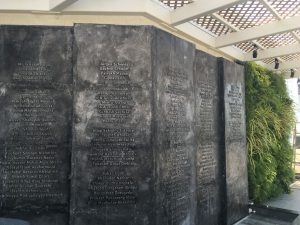
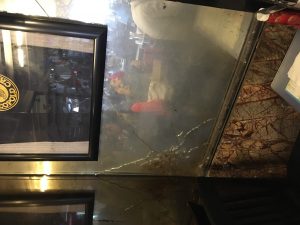
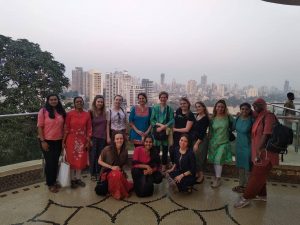
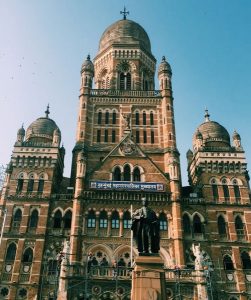
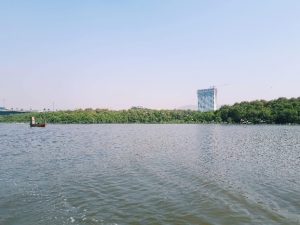
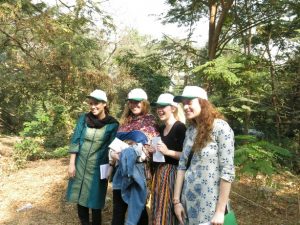
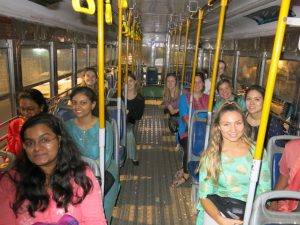
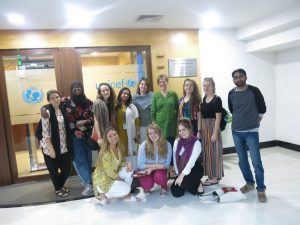
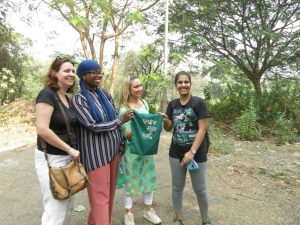

0 Comments